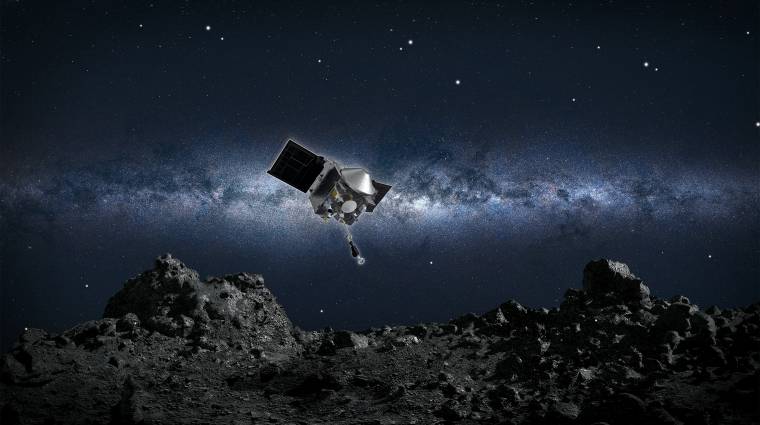If all goes according to plan, the sample from asteroid Bennu will reach Earth in a few days.
One of NASA’s most exciting projects is OSIRIS-ReX, which has been operating since 2016, aiming to explore the asteroid Bennu in as much detail as possible. The 550-meter-diameter asteroid was discovered in 1999, and is known to be among the most threatening celestial objects to Earth, with a 1:1,000 chance of impact sometime in 2182, according to 2010 calculations.
The most important part of the OSIRIS-REx mission was the accidental landing in 2018, during which the probe, built by NASA and Lockheed Martin, used an arm to collect rock samples from the asteroid. If all goes according to plan, the shipment will reach Earth within a few days.
Among other things, NASA reminded the world on the X interface (formerly Twitter) that the space cargo will arrive on September 24, in the form of a rock sample weighing 8.8 ounces, or approximately 250 grams. It is expected to arrive in the late afternoon Central European time, after OSIRIS-Rex, which is approaching without slowing down at a distance of 102 thousand kilometers, receives the command from the control center to launch the sample.
We are two weeks away from… @NASADelivery of the first asteroid sample!
in September. On February 24, NASA’s OSIRIS-REx spacecraft’s sample return capsule will deliver an estimated 8.8 ounces of rocky material from asteroid Bennu.
Learn how asteroid sample delivery works: https://t.co/VOTii38ldY pic.twitter.com/NLgBwduTXQ
— NASA Solar System (@NASASolarSystem) September 10, 2023
The capsule, which hides priceless rocks, will enter the Earth’s atmosphere at 4:42 p.m., and approach the surface at a speed of 44,500 kilometers per hour. The landing was restricted to parachutes, and if NASA engineers aimed well, the landing would take place in Utah’s Great Salt Lake Desert. However, the real work only begins after that, as the “pebbles” that came from afar must also be analysed.
This promises to be particularly exciting, because since this collection was assembled, NASA scientists have been excited to discover that Bennu’s surface has a much more flexible structure than expected, for which there is no explanation yet. the Mashable According to his report Even the Vatican is helping to answer the mystery, because the team that will do the analysis will include Jesuit monk Robert G. Mackey, a leading astronomer, who designed a special device to measure the density of rocks.
About the return of OSIRIS-REx a You can read it on NASA’s blog in detail.












































